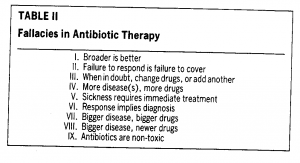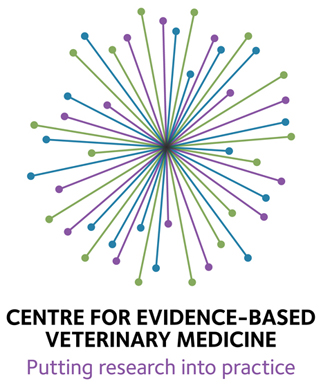In January, I discussed growing skepticism about the benefits of oral glucosamine and chondroitin as a treatment for arthritis in dogs and cats. In that post, I made reference to a short feature I wrote which appeared in the Journal of the American Veterinary Medical Association (JAVMA) examining the clinical trial evidence for the use of glucosamine and chondroitin. In this article, I stated:
Oral administration of glucosamine and chondroitin is often used for prevention and treatment of osteoarthritis in dogs, and there is widespread belief in the safety and efficacy of this practice. However, it is important to base recommendations to clients on the best possible research evidence and not solely on the popularity of a practice or anecdotal reports of positive outcomes…
[T]here was insufficient evidence to support a recommendation of glucosamine and chondroitin as an alternative to NSAID medication for treatment of clinical signs attributed to osteoarthritis in dogs…Glucosamine and chondroitin are perhaps the most widely used nutraceuticals for treatment of osteoarthritis in human and veterinary patients. It is worth considering, however, that there is only very weak clinical trial evidence to support this practice and that it is appropriate for veterinarians to temper their recommendations to their clients accordingly.
A recent commentary in Veterinary Practice News by Dr. Narda Robinson, a professor of “integrative” veterinary medicine at the Colorado State University, and occasional participant in discussions here, takes issue with the conclusions of my review. I have a lot of respect for Dr. Robinson, and I think we agree on many issues associated with evidence-based veterinary medicine, but there are some fundamental disagreements I think are uncovered by her approach to evaluating the evidence concerning the use of oral glucosamine and chondroitin for arthritis.
She begins by referring to recent analyses and clinical trials in humans, which add to the already existing data, that seem to indicate glucosamine and chondroitin are no better than placebos in treating arthritis pain. However, even in referring to these results, Dr. Robinson begins to lay the foundations of her ultimate conclusions, citing authors of glucosamine studies to illustrate that no one other than “skeptics” such as myself seems to care what the evidence says. This seems distinctly at odds with her claims to an evidence-based approach.
After finding no clinically relevant effects on perceived joint pain or joint space narrowing, the authors wrote, “We are confident that neither of the preparations [glucosamine or chondroitin] is dangerous. Therefore, we see no harm in having patients continue these preparations as long as they perceive a benefit and cover the costs of treatment themselves.”
From another glucosamine review, “[I]t is likely that most consumers find the presence or absence of clinical evidence demonstrating efficacy to be irrelevant.”
According to Dr. Robinson, while “unsure of glucosamine’s benefits, many veterinarians nevertheless err on the side of hope…” and prescribe one of the plethora of possible glucosamine and chondroitin containing products on the market. She then refutes a couple of possible objections to the claims that oral glucosamine and chondroitin are beneficial for arthritis treatment. In my opinion, these refutations vary in quality from clearly correct, to correct but unbalanced, to outright misleading. I will address each briefly.
Specific Factual Points
1. Oral absorption of Glucosamine:
Dr. Robinson- Measurable amounts of glucosamine can be absorbed and reach the blood and the joints after oral administration at clinically reasonable doses.
SkeptVet- I agree. While the study cited was conducted in horses, which would not necessarily be relevant in dogs and cats, similar studies suggest low but measurable bioavailability for these species. This establishes the plausibility of oral glucosamine, though of course it doesn’t directly demonstrate any meaningful clinical effects.
The levels found in plasma and joint fluid after oral administration in these studies are often significantly lower than in many of the in vitro studies that show effects of glucosamine and chondroitin of the synthesis, degradation, or metabolic activity of cartilage cells (for an excellent review, see the introduction to this study). So the clinical relevance of the bioavailability of these substances remains to be demonstrated.
2. Glucosamine Doesn’t Build Cartilage
Dr. Robinson- “Glucosamine serves as a precursor for glycosoaminoglycans, the main component of joint cartilage.”
SkeptVet- I agree, sort of. Though glycosoaminoglycans are made naturally starting with glucose, glucosamine is an intermediate in the pathway to synthesizing them, and it appears that providing cartilage cells in vitro with extra glucosamine can affect this synthesis. It is far less clear, however, whether this actually happens in the joints of living animals given oral glucosamine. This is really what matters, of course, so referring to glucosamine as a precursor in cartilage production can be a bit misleading because it implies that taking glucosamine stimulates cartilage production in patients with arthritis, which may not be true.
The rat model study she refers to did find some observable effect on cartilage damage and metabolism in rats given glucosamine, and a similar rabbit study also found some effects. Both studies, however, also found no significant change in some measures of cartilage loss, and the subjects had extensive cartilage damage even when given glucosamine, so whether the supplement would have a meaningful clinical benefit even in these models, much less the very different environment of a cat or dog joint with naturally occurring arthritis, is hard to say. Human trials are also mixed, with some showing a beneficial effect on cartilage and others not. So a real benefit is possible, but certainly not proven.
4. Glucosamine Doesn’t Reduce Inflammation
Dr. Robinson- “[glucosamine] reduces release of inflammatory mediators. Glucosamine appears to penetrate inflamed joints more readily than healthy ones…”
SkeptVet- I agree, sort of. Certainly, glucosamine given orally and absorbed at low levels into the bloodstream is likely to penetrate inflamed joints more readily than healthy ones. This is just a function of the increased permeability of capillaries in areas of inflammation, and it is true for most substances in the blood stream. It doesn’t tell us if the glucosamine is doing anything useful in these joints. And, of course, it actually argues against the notion sometimes advanced that glucosamine may have a protective benefit for joints not yet affected by arthritis, since apparently even less of the absorbed glucosamine is likely to penetrate into such joints.
As far as the anti-inflammatory effects of glucosamine and chondroitin, they are certainly established in vitro. There is some debate about whether or not they are clinically relevant effects at the concentrations actually achieved in joints when they are given orally. Much of the in vitro research involves either amounts of these agents that are much greater than achieved in actual patients or study of individual inflammatory markers or chemicals, which may or may not tell us much about the effects in the “real-world” environment of an arthritic joint.
6. Glucosamine and Diabetes:
Dr. Robinson- “oral glucosamine/chondroitin does not affect glycemic control or lead to diabetes in the short term. But this research does not answer the question of whether glucosamine is safe for diabetic dogs.
SkeptVet- I agree, and I would probably state the case even more strongly. Given the extensive evidence in human diabetic, and the much more limited research in cats and dogs, I think it very unlikely that glucosamine would cause clinically meaningful problems for diabetic pets. Just as early studies on the benefits of glucosamine were not supported by later, better research, so many of the early studies on the risks of the supplement have not been sustained. The research in pets is not definitive, but the balance of the evidence available is pretty clear.
7. Clinical Benefits of Glucosamine
This is one area in which Dr. Robinson and I pretty clearly disagree. I think she is correct that the results of clinical trials are conflicting, but I think it is a mistake to believe that this means no firm conclusion on efficacy can be drawn. In his book Snake Oil Science, published in 2007, R. Barker Bausell reviewed the clinical research on glucosamine in humans exhaustively, and the balance of the evidence was clearly against any meaningful clinical effects. The larger and better designed or controlled the study, the less likely it is that a benefit will be seen. Studies funded by companies marketing glucosamine products are much more likely to be positive than studies funded by more neutral parties. And since this book was published the studies and reviews I provided links to above have continued to produce mostly negative results.
The evidence concerning the clinical effect of glucosamine in humans is not absolutely uniform, of course. But it never is. There is a well-known process, sometimes called “the decline effect,” by which early studies, often small and poorly designed and often funded and or run by companies or individuals with vested interests in a given hypothesis, and later studies by other researchers with better samples and designs fail to confirm the initial findings. This is not a flaw in science but rather an example of why methodological quality and independent replication of results are so crucial in separating the wheat of truth from the chaff of all the great idea that ultimately turn out to be wrong. Glucosamine research is almost a paradigm of this process, so it is misleading to point to the inconsistency in clinical research results as if it indicated deep uncertainty, when in fact it indicates a gradual refining of the data leading to the conclusion that a meaningful clinical benefit in humans is quite unlikely.
Dr. Robinson raises the issue of heterogeneity to explain the inconsistency in clinical trial results. Heterogeneity simply means that any population of subjects in a clinical trial will, of course, not consist of identical individuals. It is possible that the intervention being tested might work for a subset of individuals with particular characteristics, but if we don’t know what these characteristics are, randomization will scatter these folks evenly between the placebo and treatment groups, and it will look like the treatment doesn’t work. Heterogeneity is a known limitation of clinical trials and population statistics, which can to some extent be controlled for but which will always present the risk of study results which are valid for populations but not for some individuals.
This is a legitimate concern, but unfortunately it is also an easy way to cast doubt on all clinical research and lay the foundations for the argument that clinical trials ultimately can’t tell us anything useful about how to treat individual patients. It is important to be careful that our concerns about the issue of heterogeneity does not become a kind of clinical trial nihilism that leads us to give up entirely on the immense proven value of clinical trials in guiding medical interventions. Put another way, nothing is perfect, including clinical medical research, but we must be careful not to let the perfect become the enemy of the good to the point where we cannot make meaningful conclusions based on the evidence that exists. This is a caution commonly directed at skeptics who challenge the quality and conclusions of CAM research, but it is also applicable to proponents of CAM who argue that the imperfections of science invalidate the conclusions it reaches on their preferred methods. I believe Dr. Robinson herself appreciates the value of clinical research, but the heterogeneity argument she uses is one that can easily be taken to unfortunate extremes, and has been by others.
The clinical research on glucosamine/chondroitin in dogs and cats is far less in quantity and quality than the human clinical trial data. In my JAVMA paper (which, incidentally, was not a complete review of the subject but only an illustration of a practical and efficient use of evidence-based medical reasoning to answer a focused clinical question), I mentioned two clinical studies. One found no benefit for glucosamine and the other showed little benefit. Both showed far greater and more predictable benefit to NSAID therapy, which is a consistent feature of clinical research on glucosamine and chondroitin.
In her commentary, Dr. Robinson mentions another study which I did not address in my JAVMA piece, since this study involves cats and my article only addressed glucosamine for dogs with arthritis. It is not really a direct investigation of glucosamine/chondroitin supplementation for arthritis but rather of dietary therapy with a diet that includes glucosamine and chondroitin along with other ingredients thought to be beneficial for arthritis, but it is an interesting study which deserves a closer look.
The study was a well-designed randomized, blinded trial with a 70-day monitoring period and a mixture of objective and subjective measurements. 40 cats completed the study, evenly divided between the test diet and a control diet identical except for the absence of fish oils, glucosamine, chondroitin, and green-lipped mussel extract. Obviously, one issue with this study is the presence of multiple ingredients aimed at treating the subjects’ arthritis, which makes it impossible to say anything definitive about whether the glucosamine and chondroitin were ore were not beneficial.
Another concern is that there was one significant difference between the control and test cats, namely that the control cats started the study weighing more and, while both groups lost weight during the study (though not very much), the control cats weighed significantly more at the end of the study. Weight is a very important factor in the clinical symptoms of arthritis. Heavier cats would be expected to have worse symptoms and more rapid progression, and weight loss would be expected to improve symptoms all by itself, so this could confound the findings of this particular study.
As usual, the results were mixed, but as I read the paper they strike me as not very impressive. Subjective pain scoring by owners (who may or may not have been effectively blinded to the treatment and placebo allocation, it’s impossible to tell from the report) improved for both groups, but the difference between test and control groups was not significant. This may represent a “placebo” effect of being enrolled in a clinical trial, or less likely and effect of weight loss.
The objective measure, using an automated activity monitor, showed no overall significant difference between the groups. Interestingly, the control group showed significantly less activity overall and at 2 of the four times of day analyzed when 14-day periods at the beginning and end of the study were compared. A complex regression analysis looking at diet, weight at the start of the study, and weight loss during the study seemed to show an increase in the evening activity level of cats on the test diet, and no change in the activity of these cats at any other time. This analysis also showed a decrease in the activity of the cats on the control diet at all times except overnight.
I am not qualified to evaluate the validity of the statistics involved, but it seems odd that if the test diet had a beneficial effect on arthritis it would show up as a decrease in the activity of the cats on the control diet rather than an increase in the activity of the cats on the test diet. The authors suggest that this may mean that the cats on the test diet had less progression of their arthritis, but I am doubtful that such significant changes represent the progression of arthritis symptoms over only 70 days.
Other subjective measures, such as overall owner-assessed quality of life, improved for both groups with no significant differences between them. A few measures did change significantly in each group from the beginning to the end of the study:
Decreased aggression and eating in control group
Increased sleeping in the control group
Increased jumping and eating in the test group
Decreased sleeping in the test group
There were also some subjective owner assessments of behavior change during the study that differed significantly between the groups. Playing and interaction with other pets increase for both groups, but more for those on the test diet than those on the control diet. Both groups slept less and hid less over the course of the study, but again the change was greater for the test diet group than the control group.
Subjective measures of pain on physical examination by veterinarians in the study showed improvements in both groups but no significant difference between them.
So overall the study shows a lack of significant difference between the groups in most measures but a few differences that do reach statistical significance. The overall pattern is not consistent or compelling, but it may be that the cats on the control diet became less active over the 70 days of the study, which could conceivably suggest some influence of diet on activity. However, most measures improved for both groups, which illustrates the non-specific treatment effects (aka “placebo” effects) that are such a problem in figuring out what are real treatment effects in clinical research studies and what are artifacts of the research process.
In any case, even if the test diet did have real effects on the behavior of the cats in the study, that doesn’t tell us if the effects were clinically meaningful, if they had to do with treatment of arthritis symptoms, or if they were due to glucosamine. Yet the study is cited in Dr. Robinson’s article with the clear implication that it is positive evidence for the benefits of oral glucosamine in the treatment of arthritis. This is a seriously misleading oversimplification which is unfortunately all too common in debates about the merits of medical interventions, particularly those for which the research data is not absolutely unequivocal, which it rarely is.
The Bottom Line
So clearly Dr. Robinson and I agree on many things. We agree that glucosamine can be absorbed in low but measurable amounts when given orally, that some of it reaches joints, and that in vitro at least it can have anti-inflammatory effects. These facts establish the plausibility of glucosamine as a treatment for arthritis, but not that it actually works.
We also agree that it is most likely very safe. There is some risk associated with the poor regulation and quality control of nutraceuticals generally, which often contain dangerous contaminates and other ingredients not on the label. And I have had clients who eschewed proven therapies, such as NSAIDs, because they felt glucosamine alone was sufficient arthritis therapy, which leaves animals with inadequately treated pain. But Dr. Robinson carefully points out that she would not recommend this kind of single-agent use, and overall I think we agree that there is little risk associated with using glucosamine.
Where we disagree, as far as the facts, is in the interpretation of the clinical trial evidence. I think it is solidly against there being any meaningful benefit for oral glucosamine for all the reasons I have indicated. Dr. Robinson appears to believe that benefit is uncertain but possible. While I don’t believe her assessment is correct, it is certainly not irrational or unreasonable. Intelligent, informed, well-intentioned people can certainly disagree over the facts.
However, I think our greater disagreement is not on the question of the interpretation of the evidence but more fundamentally what constitutes evidence-based medicine. She concludes her article this way:
Although the evidence on glucosamine remains contradictory, there does appear to be some value and little risk. Not ready to abandon a product that could very well help and likely not hurt, this evidence-based practitioner will continue to mention glucosamine as one of many options for multimodal analgesia for OA patients and potential disease modifying OA benefits as well.
It seems to me that this amounts to saying, “It’s most likely harmless, and it could help, so why not try it?” I think she most accurately described her position herself when she said, “unsure of glucosamine’s benefits, many veterinarians nevertheless err on the side of hope.” The recommendation of glucosamine as a treatment for arthritis is not a decision based on evidence, but based on hope.
So, as Dr. Robinson asks, is there anything wrong with this? In the case of glucosamine, no not really. But I do worry a lot about the impact of practicing “hope-based medicine” generally, and especially of identifying it as evidence-based medicine. Ten years ago, when the data was less clear, I was hopeful glucosamine might be a useful therapy for my patients. I regularly recommended it, I gave it to my own pets, and I even took it myself. Then, as the data grew clearer, I abandoned the therapy because that ultimately is the approach to medicine that I think is most likely to lead us to the best, most effective practices.
Lots of people hope that homeopathy will help their pets, and many believe it does. And it is certainly harmless in itself, as it is only water. So is it right to use it alone, or even to add it to conventional therapy, “just in case?” I don’t think so. Granted, the evidence against glucosamine is strong but not indisputable, and the evidence against homeopathy is overwhelming. But I’m sure Dr. Robinson, no fan of homeopathy herself, has had exactly the kind of disagreements with proponents of homeopathy that she and I are having here. It is possible to find some positive studies, of poor quality and with high risk of bias, to support the use of homeopathy. Or prayer, or energy healing, or just about any intervention that people hope will benefit themselves or their patients patient. And so it is always possible for intelligent, rational people to be driven by this hope to put the most positive possible spin on the evidence, or at the last resort to say, as I think Dr. Robinson has in her article, “It’s most likely harmless, and it could help, so why not try it?” But that isn’t evidence-based medicine, and even if in individual cases, like that of glucosamine, such an approach may not lead to great harm, overall it undermines the quality and rigor of the reasoning that we use to decide what is truly helpful to our patients and what isn’t.
I regularly tell my clients that the evidence, while incomplete and not entirely consistent, is pretty strongly against any benefit from glucosamine and that the evidence of potential harm is very low, and then I let them decide if they want to use it or not. If I interpreted the existing evidence more positively, as Dr. Robinson does, I might tell them that glucosamine is harmless and might possibly have some benefits though the data is unclear, and again let them decide whether that is sufficient to warrant using it, which is what it sounds like Dr. Robinson does.
So it doesn’t sound like in practice Dr. Robinson and I approach the particular product all that differently with our clients. But the subtle difference in emphasis does seem of some importance to me. Her article gives the distinct impression that her reluctance to abandon the product is based not primarily on the balance of the evidence being positive but simply on the fact that the evidence is not uniformly negative, and if there is any reason to hope it might work it is worth trying (in the absence of clear evidence of harm). As I understand it, truly evidence-based medicine should give the greatest weight to the highest level available evidence and should not give any special weight or importance to our hopes. I understand Dr. Robinson’s perspective, and it makes a kind of sense. But it is all too familiar from many debates I have had with far less reasonable people about far more unlikely, or even ridiculous interventions. Erring on the side of hope is understandable, but it is not evidence-based medicine, and in the long run I don’t think it’s in the best interests of our pursuit of the truth about medical therapies or of our patients.











